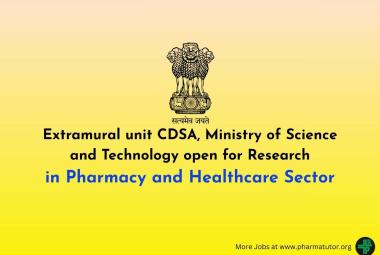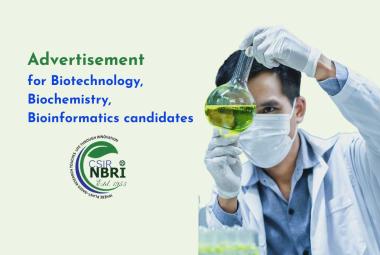 ABOUT AUTHORS:
ABOUT AUTHORS:
Mohd. Yaqub khan*, Poonam gupta, Vikaskumar verma, Ashish pathak
Saroj Institute of Technology & Management,
Ahimamau, P.O. Arjunganj, Sultanpur Road, Lucknow-226002,
Uttar Pradesh, India
*khanishaan16@yahoo.com
ABSTRACT
Medicinal plants continue to play a central role in the healthcare system of large proportions of the world’s population. This is particularly true in developing countries, where herbal medicine has a long and uninterrupted history of use. Continuous usage of herbal medicine by a large proportion of the population in the developing countries is largely due to the high cost of Western pharmaceuticals and healthcare. Every year, millions of people are diagnosed with cancer, leading to death in a majority of the cases. Specific part of it is formulated into suitable preparations compressed as tablets or made into pills, used to make infusions, extracts, tinctures, etc., or mixed with excipients to make lotions, ointments, creams, etc. Few herbal drugs are subject to legislative control. The plant based drug discovery resulted mainly in the development of anticancer agents including plants (vincristine, vinblastine, etoposide, paclitaxel, camptothecin, topotecan and irinotecan). Beside this there is numerous agents identified from fruits and vegetables can used in anticancer therapy. The agents include curcumin (turmeric), resveratrol (red grapes, peanuts and berries), genistein (soybean), diallyl sulfide, S-allyl cysteine (allium), allicin (garlic), lycopene (tomato), capsaicin (red chilli), diosgenin, 6-gingerol (ginger), ellagic acid (pomegranate), ursolic acid (apple, pears), silymarin (milk thistle), anethol, catechins, eugenol, indole-3-carbinol, limonene, beta carotene, and dietary fiber. In this review active principle derived from natural products are offering a great opportunity to evaluate not only totally new chemical classes of anticancer agents.
[adsense:336x280:8701650588]
REFERENCE ID: PHARMATUTOR-ART-1736
INTRODUCTION
The history of plant as source of anti-cancer agents started in earnest in the 1950s with the discovery and development of the vinca alkaloids (vinblastine and vincristine) and the isolation of the cytotoxic podophyllotoxins. Vinca alkaloid was responsible for an increase in the cure rates for Hodgkin’s disease and some forms of leukemia. Vincristine inhibits microtubule assembly, inducing tubulin selfassociation into coiled spiral aggregates. Etoposide is an epipodophyllotoxin, derived from the mandrake plant Podophyllum peltatum and the wild chervil Podophyllum emodi. It has also significant activity against small-cell lung carcinoma. Etoposide is a topoisomerase II inhibitor, stabilizing enzyme–DNA cleavable complexes leading to DNA breaks. The taxanes paclitaxel and docetaxel has been show antitumor activity against breast, ovarian and other tumor types in the clinic trial. Paclitaxel stabilizes microtubules and leading to mitotic arrest. In addition, the camptothecin derivatives irinotecan and topotecan, have shown significant antitumor activity against colorectal and ovarian cancer respectively. These compounds were initially obtained from the bark and wood of Nyssacea Camptotheca accuminata and act by inhibiting topoisomerase I. The taxanes and the camptothecins are presently approved for human use in various countries.[1]
The Rate of Success
The use of non-toxic natural therapies has achieved huge successes over the past few decades. Extensive studies have proven them to have an edge over conventional therapies. Many of the alternative cancer hospitals are found in Mexico. For example, Dr Contreras of the Oasis Hospital reported that his 5-year survival rate for prostate cancer is 83% when using natural treatment compared to 73% for conventional treatment. At the American Metabolic Institute, renowned scientist Dr Geronimo Rubio reported success rates in reversing stage III and IV cancers from 65 to 75%. The reversal rate for stage I and II cancers is 80%. While the 5-year survival for ending stage cancer using conventional therapy is 9% overall, alternative cancer hospitals report that theirs is more than 30%. While 4% of terminal cancer patients’ show no response to alternative treatments, the other 96% can expect some benefits after a month of treatment. There is therefore no turning back for patients who have bravely embarked on the path of alternative treatments. Clearly, the success rate of natural treatment is so much better than for many conventional cancer treatments. As such, if you or your family members have cancer, you should consider all forms of alternative treatment before deciding on which program to embark on. Today, many patients opt for combination therapy, using both conventional and alternative cancer treatments. This combined therapy is becoming more and more popular as the success rates are higher. [2]
[adsense:468x15:2204050025]
Integrating natural and conventional therapies [3]
Human and animal studies have shown successful and amazing results when chemotherapeutic agents and natural compounds are used in combination. The objectives and rationale behind combining conventional therapies with natural treatments are as follows:
1. To give a safer and more effective dose to reduce the negative side effects.
2. To help build healthy cells’ resistance to chemotherapy and radiotherapy and increase drug accumulation in cancer cells.
3. To increase additive or synergistic cytotoxic effect with chemotherapy and radiotherapy.
Table 1: PLANTS USED AS ANTI-CANCER [4, 5, 6]
|
S.NO. |
Class |
Source |
Family |
Active Constituent |
Mode Of Action |
Site Of Action |
|
1. |
Vinca alkaloids |
Catharanthus roseus |
Apocynaceae |
Vinblastine and Vincristine |
Inhibit the cell proliferation by affecting the microtubular dynamics during mitosis and this causes a characteristic block during mitosis leading to apoptosis. |
Leukemia’s, Lymphomas, Advanced testicular cancer, breast cancer, Lung cancer and Kaposi’s sarcoma
|
|
2. |
Podophyllum |
Podophyllum peltatum Linnaeus and Podophyllum emodi Wallich. |
Berberidaceae |
Podophyllotoxin, Epipodophyllotoxin |
|
Lymphomas, bronchial and testicular cancers. |
|
3. |
Taxanes |
Taxus brevifolia Nutt. |
Taxaceae |
Paclitaxel |
Active agents bind to the polymerized microtubules which prevent the normal mitosis to occur and thus they are called anti-mitotic drugs
|
Metastatic, breast, Ovarian, lung, Prostate cancer and lymphoid malignancies |
|
4. |
Isoquinoline plant alkaloid |
Hvdrastis Canadensis L. |
Ranuncufaceae |
Berberine |
Not known |
Osteosarcoma, lung, liver, prostate and breast cancer |
|
5. |
Secondary metabolite |
Colchicum autumnale |
Liliaceae |
Colchicine |
It causes mitotic arrest during cell cycle and thus they are considered as potent anti-mitotic drug both in-vitro and in-vivo. |
Leukemic and solid tumors |
|
6. |
Bis-coumarin derivative |
Wikstroemia indica |
Thymelaeaceae |
Daphnoretin |
Suppression of protein and DNA synthesis |
a) Human hepatoma Hep3B cells. b)Suppression of protein and DNA synthesis |
|
7. |
Cytotoxic alkaloid |
Camptotheca acuminate. |
Combretaceae |
Camptothecin |
inhibiting DNA Topoisomerase I which plays a major role in various DNA functions like replication and transcription. |
Epithelial ovarian cancer ,Small cell lung cancer, Metastatic , colorectal cancer, Potential anti-tumor activity both in vitro and in vivo
|
|
8. |
Soy Isoflavones. |
Glycine max |
Meliaceae |
Diadzein and Genistein |
Inhibits 3A 4- mediated metabolism and oxidative metabolism. |
Iinhibits ovarian and breast cancers and also chemically induced cancers of stomach, bladder, lung, prostate, colon and blood. |
|
9. |
Polyphenolic compound |
Curcuma longa |
Gingerberace |
Curcumin |
Intercalates with DNA and also causes inhibition of Topoisomerase II activity. It is also reported that this drug, inhibits cell growth and causes apoptosis of human hepatocellular carcinoma HepG2 cells |
Colorectal cancer, multiple myeloma and pancreatic cancer. |
|
10. |
Carbazole alkaloid |
Thevetia peruciana |
Apocynaceae |
Ellipticine |
DNA intercalation and inhibition of topoisomerase II |
Various cancer cell types |
|
11. |
Pneumotoxic furan derivative. |
Ipomoeca batatas |
Convolvulaceae |
4-Ipomeanol |
Cytochrome P-450- mediated conversion into DNA-binding metabolites |
Lung specific cancer in animal models |
|
12. |
Flavone derivative |
Amoora rohituka |
Maliaceae |
Flavopiridol |
Inhibits cell cycle progression at G1 or G2 phase. |
Colorectal, non-small cell lung cancer, renal cell carcinoma, non-Hodgkin’s lymphoma, chronic lymphocytic leukemia, and also solid tumors. |
|
13. |
Benzoquinone alkaloid |
Iridaceaelatea pallasii |
Iridaceae |
Irisquinone |
Acts as a chemosensitizer
|
Good activity in transplantable rodent tumors.
|
NOW YOU CAN ALSO PUBLISH YOUR ARTICLE ONLINE.
SUBMIT YOUR ARTICLE/PROJECT AT articles@pharmatutor.org
Subscribe to Pharmatutor Alerts by Email
FIND OUT MORE ARTICLES AT OUR DATABASE
Table 2: Dosages form of Anticancer Drugs [7]
|
Sr.No. |
Product (INJECTION) |
Spec. |
Strengths |
|
1 |
Cyclophosphamide Injection |
BP,USP |
200mg, 500mg, 1gm |
|
2 |
Methotrexate Injection |
BP |
25mg |
|
3 |
Fluorouracil Injection |
BP |
50mg |
|
4 |
Cisplatin Injection |
BP |
1mg |
|
5 |
Doxorubicin Hydrochloride Injection |
BP,USP |
2mg |
|
6 |
Doxorubicin Hydrochloride for Injection |
BP,USP |
2mg |
|
7 |
Irinotecan Hydrochloride Injection |
IP |
20mg |
|
8 |
Carboplatin Injection |
BP |
10mg |
|
9 |
Vincristine Sulfate Injection |
USP |
1mg |
|
10 |
Gemcitabine for Injection |
USP |
200mg, 1gm |
|
Sr. No. |
Product (TABLETS) |
Spec. |
Strengths |
Pack Size (Strip) |
|
1 |
Tamoxifen Citrate Tablets |
BP,USP |
10mg, 20mg |
10's |
|
2 |
Methotrexate Tablets |
BP |
2.5mg, 5.0mg, 7.5mg |
10's |
|
3 |
Bicalutamide Tablets |
USP |
50mg |
10's |
|
4 |
Anastrozole Tablets |
Inhouse |
1mg |
10's |
|
5 |
Letrozole Tablets |
USP |
2.5mg |
10's |
|
6 |
Gefitinib Tablets |
Inhouse |
250mg |
10's |
|
8 |
Fludarabine Phosphate Tablets |
Inhouse |
10mg |
10's |
|
9 |
Flutamide Tablets |
Inhouse |
250mg |
10's |
|
Sr. No. |
Product (CAPSULES) |
Spec. |
Strengths |
|
1 |
Hydroxyurea Capsules |
USP |
500mg |
|
2 |
Imatinib Capsules |
Inhouse |
100mg, 400mg |
|
3 |
Temozolomide Capsules |
Inhouse |
20mg, 100mg, 250mg |
|
4 |
Etoposide Capsules |
IP,USP |
50mg, 100mg |
ECONOMIC BENEFITS AND ROLE OF PRIVATE SECTOR IN PHYTOMEDICINE [8, 9]
The interest in natural therapies has increased international trade and attracted most pharmaceutical companies interested in commercializing phytomedicine. The private sector plays a crucial role in developing economic activities relating to herbal biopro-specting, using the skills and knowledge of local peoples and compensating them for their knowledge. In both developing and developed countries, traditional medicine plays a significant role in primary care and is often part of the “informal” private sector. In the last few years developing countries have felt the increasing pressure of what has now become known as bioprospecting and biopiracy. The pressure has come especially in the sector of traditional medicine. In parts of Asia and Africa, 80% of the population report frequent use of traditional medicine. In developed countries, nearly 80% have used traditional medicine services. Herbal medicine, a form of traditional medicine, is a billion dollar industry. Policies for traditional medicine exist in over 100 countries, but regulating quality and safety for patient use and sustaining knowledge and resources remain challenges). Given the fact that in most countries, very little legislation is in place, civil society groups and governments have reacted increasingly strongly. The production, processing and sale of phytomedicine products create employment for the producing countries .Communities are looking for concrete short term benefits and, in most cases, monetary benefits. Therefore, they would not be interes-ted in long drawn out access and benefit agreements. There is a need for funding agencies and bioprospectors to start funding the communities or the service providers to communities to work through the process of value addition to both potential and existing products, through a bottom up approach.
General Toxicities of Antineoplastic / Anticancer Drugs are: [10]
- Bone marrow depression
- Lymphocytopenia
- GIT Stomatitis
- Diarrhoea
- Nausea and Vomiting
- Alopecia
- Hyperuricaemia
- Hair loss
ANTICANCER PLANTS IN CLINICAL TRAILS [11]
In 2012 sulforaphane or brocoli extract where at least in 19 clinical trials. Apigenin and epigalocatechin participated at phase II clinical trial. In 2012 there were 35 clinical trials of different herbs effect for cancer cure in USA.
My Top Anti-Cancer Foods [12]
Broccoli.Cruciferous vegetables are my top anti-cancer food, and broccoli heads the list. It is rich in sulforaphane, an antioxidant that helps the liver break down and destroys cancer-causing toxins. Sulforaphane also increases the activity of liver enzymes that help to get cancerous substances out of the body. Even better, broccoli sprouts contain 50 times more sulforaphane than that found in regular broccoli. Broccoli sprouts also have been shown to fight H. pylori, a type of bacteria believed to cause stomach cancer.
Tomatoes. This fruit is rich in lycopene, the antioxidant that gives tomatoes their red color. Studies have found that tomatoes reduce the risk for prostate cancer—and also might reduce the risk for lung and stomach cancers.
Garlic. Slice or dice garlic clove, and a relatively inert compound called allicin undergoes an amazing cascade of chemical changes. Nearly all allicin-generated compounds function as antioxidants that prevent the types of cell mutations that give rise to cancer. Evidence suggests that garlic might help protect against cancers of the colon, prostate, esophagus,larynx, ovaries and kidneys.
Spinach. Spinach and other “greens,” such as chard and collard greens, are rich in antioxidants that protect cells from the type of damage that can create cancerous mutations. One study published in Journal of Agricultural and Food Chemistry gave spinach the top “bioactivity index” ranking of vegeta- bles for its ability to protect against cancer.
7 STEPS TO BEATING CANCER NATURALLY [13, 14]
Cancer can be beaten naturally if you are determined. There are seven things you must do from the natural medicine perspective to control cancer cell growth and beat it. They reflect a complete approach to address the major cancer facts outlined above. All seven steps are important. Do not think that one is more important than others. You have to do all if you are serious. Start with step 1, and move on to the next steps, one at a time, while continue to do what the previous step requires. Take your time to conquer each step before moving on. Most people require about three weeks per step. Beating cancer is a marathon and not a sprint. If you can move through the seven steps faster, it is even better.
Step 1 Starving Cancer cell
Cancer is a sugar-feeder. Learn to cut down the sugar intake by up to 90% to create a low sugar environment. You do need food for energy. Change to lowglycemic index complex carbohydrates. Cut off all soda pop, most grains, rice, and potato.
Step 2 Oxygenate your body
Cancer cells hate oxygen. They strive in an anaerobic environment. Moderate aerobic exercise is the easiest and cheapest way to get oxygen on board. If you are too weak to do exercise, simple deep breathing is a good start. Other oxygen generating modalities could be considered including ozone and hydrogen peroxide therapy.
Step 3 Avoid Malnutrition
Forty percent of cancer patients die of malnutrition. You need good nutrition, with healthy fats and plant-based proteins to maintain nitrogen balance and muscle strength without aggravating the cancer. The amount of calories you need is determined by your physical activity level. It is easy to get calories in. The challenge is to get nutritious and not empty calories into your body. Stay with organic whole foods, with plenty of green leafy vegetables, low-glycemic fruits, and beans and legumes for plant-based protein.
Step 4 Use Nutritional Supplements
Therapeutic nutritional supplement is a cornerstone of the natural medicine because our body simply cannot get enough of them from a regular diet. A blend of at least 30-50 nutrients is needed to:
1. Prevent mutation with therapeutic doses of antioxidants.
2. Enhance mitochondrial function to increase energy production.
3. Prevent cancer growth by blocking its spread.
4. Enhance immune function to fight existing cancer cells.
Step 5 Balance Your internal terrain
Probiotics, enzymes, green food, and fiber are the four key pillars to re-balance your internal milieu and pH. Use these every day to ensure optimum transit time, proper absorption of nutrients from the food you take, and proper balance of good and bad bacteria.
Step 6 Balance Your Toxin Load
Hundreds of toxic chemicals including mercury, lead, arsenic and cadmium have accumulated in our body through the years. Detoxification is a process of cleaning up our ecosystem and giving it a fresh start. The key elements are:
1. Use pure filtered water as your only source of liquid, and drink plenty of it. There is no substitute.
2. Enhance our liver function with herbs such as milk thistle. Our liver is the main detoxification organ.
3. Use chelating agents to bind and remove unwanted metals and minerals.
4. Drink fresh vegetable juices. Vegetable juicing floods the body with antioxidants.
Step 7 Balance Your Hormones
Often misunderstood and under-appreciated, hormones have a lot more to do with cancer than we think. This is especially so with hormone-related cancers such as breast, ovary, uterus, and prostate cancers. Maintaining a balanced hormonal profile naturally is a key to well-being and longevity because we are flooded in the sea of hormones.
RESEARCH[15]
Research about cancer causes focuses on the following issues:
- Agents (e.g. viruses) and events (e.g. mutations) which cause or facilitate genetic changes in cells destined to become cancer.
- The precise nature of the genetic damage, and the genes which are affected by it.
The consequences of those genetic changes on the biology of the cell, both in generating the defining properties of a cancer cell, and in facilitating additional genetic events which lead to further progression of the cancer.Natural medicine are attracting renewed attention is encouraging from both practical and scientific view points, the efficacy has proven over the long decades, but the mode of action of folk herbal medicines and related products from nature is even more complex than mechanistic clarification of a single bioactive factor. This is because unfractionated or partly fractionated extracts are used. Often mixtures of different constituents are present. In any cases synergism is most likely playing an important role. Evaluation and isolation of these mixtures of the active constituent and their mode of action will be the challenging task. Moreover, a potentially far-reaching observation in terms of the safety of consuming certain herbs has been also evaluated. More flexibility will be required of new researchers of natural products than ever before. But because of the new tools available the rewards in terms of interest and the contribution to society will be correspondingly greater than they have ever been previously. There seems little question that a phytomedicine worker will have a role to play for many more years and that pharmacognosits can look to the future with a great deal of anticipation.
Risks [16]
A common misconception about herbalism and the use of "natural" products in general, is that "natural" equals safe. However many plants have chemical defense mechanisms against predators that can have adverse or lethal effects on humans. Herbs can also have undesirable side-effects just as pharmaceutical products can. These problems are exacerbated by different controls over purity and inconsistent information on dosage due to the status of herbs in the United States as dietary supplements which are technically not supposed to have medicinal functions. Standardization of purity and dosage is not mandated in the United States but even products made to the same specification may differ as a result of biochemical variations within a species of plant. Furthermore, if given in conjunction with drugs, there is danger of 'summation', where the herb and the drug have similar actions and add together to cause an 'overdose' or reduction in the effects, particularly with the Cytochrome P450. There is a danger that herbal remedies will be used in place of other medical treatments which have been scientifically tested for safety and efficacy, resulting in the development or worsening of a medical condition which could have been better prevented or treated. There is also a danger that an herbal remedy may itself cause harm which is unanticipated due to a lack of a full understanding of its composition and biochemical effects.
CONCLUSION [17, 18]
Natural products have been a prime source for the treatment of many forms of cancer, many of which are consumed daily with the diet. They provide significant protection against various cancers and many other diseases. The antioxidant medicinal plants and their products prevent from the cancer and other diseases by protecting cells from damage. Thus, consuming a diet rich in antioxidant fruits, vegetables, herbs etc. will provide health-protective effects. All the natural products discussed in this review exhibit anticancer activities. Natural products offer a great opportunity to evaluate not only totally new chemical classes of anticancer agents, but also novel and potentially relevant mechanisms of action. Phytomedicine, in addition to their traditional values, also hold great public and medical interest worldwide as sources of nutraceuticals or novel lead compounds for drug development. Not only herbal remedy revolution created new opportunities but also served to stimulate research in the field of direct relevance to human health care. The search for active phytocompounds will be greatly advanced by the combination of various metabolomics approaches with an array of bioactivity assays in mammalian systems to differentiate between plant species, tissues, or phytopreparations, and to identify novel lead compound candidates for future development. Medicinal plants maintain the health and vitality of individuals, and also cure various diseases, including cancer without causing toxicity. Plants derived components have played an important role in the development of several clinically useful anticancer agents. In a complementary development, the use of metabolomerefined herbal extracts with other biochemical components in combination, rather than as isolated singly compounds (s), may prove to be very useful as broader and holistic therapeutical or pharmacological agents for avariety of human health care application. The integration of phytomedicine into the health system should be developed in such a way to bring harmony between the traditional and modern system of health care with minimum threat to each other. There may be some who might well demur at what they see as the unchallenging prospect of working on phyto-medicines, since much is already known.
REFERNCE
1. Ancuceanu, R.V., Istudor, V., (2004). Pharmacologically active natural compounds for lung cancer. Altern Med Rev.,9: 402-419.
2. Deng, F., Lu, J.J., Liu, H.Y., Lin, L.P., Ding, J., Zhang, J.S., (2011). Synthesis and antitumor activity of novel salvicine analogues. Chin Chem Lett.,22: 25-28.
3. Dixon, R.A., Ferreira, D., (2002). Molecules of interest: genistein. Phytochemistry.,60: 205-211.
4. Kingston, D.G.I., (2007). The shape of things to come: structural and synthetic studies of taxol and related compounds. Phytochemistry.,68(14): 1844-1854.
5. Sa, G., Das, T., Banerjee, S., Chakraborty, J., (2010). Curcumin: from exotic spice to modern anticancer drug. Al Ameen J Med Sci.,3: 21-37.
6. Okouneva, T., Hill, B.T., Wilson, L., Jordan, M.A., (2003). The effects of vinflunine, vinorelbine, and vinblastine on centromere dynamics. Mol Cancer Ther.,2: 427-436.
7. Pan, L., Chai, H., Kinghom, A.D., (2010). The continuing search for antitumor agents from higher plants. Phytochem Lett.,3: 1-8.
8. Ley, C.D., Horsmany, M.R., Kristjansen,P.E.G., (2007). Early effects ofcombretastatin-A4 disodium phosphateon tumor perfusion and interstitial fluidpressure. Neoplasia.,9: 108-112.
9. Kingston, D.G.I., (2007). The shape of things to come: structural and synthetic studies of taxol and related compounds. Phytochemistry.,68(14): 1844-1854.
10. Dubey, K.K., Ray, A.R., Behera, B.K., (2008). Production of demethylated colchicine through microbial transformation and scale-up process development. Process Biochem.,43: 251-257.
11. Hazra, B., Sarma, M.D., Sanyal, U., (2004). Separation methods of quinonoid constituents of plants used in oriental traditional medicines. J Chromatogr B.,812: 259-275
12. Fulda, S., (2008). Betulinic acid for cancer treatment and prevention. Int J Mol Sci.,9: 1096-1107.
13. Cragg, G.M., Newman, D.J., (2005). Plants as a









